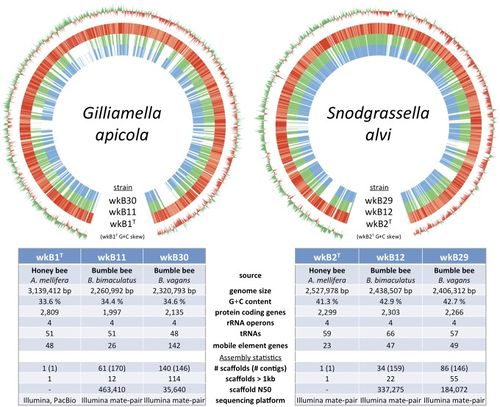Snodgrassella alvi wkB2: Difference between revisions
No edit summary |
No edit summary |
||
| Line 25: | Line 25: | ||
==Description and Significance== | ==Description and Significance== | ||
<i> S. alvi </i> is a core member of the western honey bee (<i> Apis mellifera </i>) gut microbiota. | |||
==Genome Structure== | ==Genome Structure== | ||
Describe the size and content of the genome. How many chromosomes? Circular or linear? Other interesting features? What is known about its sequence? | Describe the size and content of the genome. How many chromosomes? Circular or linear? Other interesting features? What is known about its sequence? | ||
[[File:S.alvi.jpg|500px|thumb|right]] | [[File:S.alvi.jpg|500px|thumb|right]] | ||
Revision as of 04:56, 29 April 2020
Classification
Taxonomy
Domain: Bacteria
Phylum: Proteobacteria
Class: Betaproteobacteria
Order: Neisseriales
Family: Neisseriaceae
Genus: Snodgrassella
Species: alvi
Strain: wkB2
|
NCBI: Taxonomy |
Names
Snodgrassella alvi wkB2
Candidatus Snodgrassella alvi wkB2
S. alvi wkB2
Description and Significance
S. alvi is a core member of the western honey bee ( Apis mellifera ) gut microbiota.
Genome Structure
Describe the size and content of the genome. How many chromosomes? Circular or linear? Other interesting features? What is known about its sequence?
Cell Structure, Metabolism and Life Cycle
Interesting features of cell structure; how it gains energy; what important molecules it produces.
Cell Structure
Metabolism
Life Cycle
Ecology
Habitat; symbiosis; biogeochemical significance; contributions to environment.
If relevant, how does this organism cause disease? Human, animal, plant hosts? Virulence factors, as well as patient symptoms.
References
Author
Page authored by Samantha Worthington, student of Prof. Jay Lennon at Indiana University.

